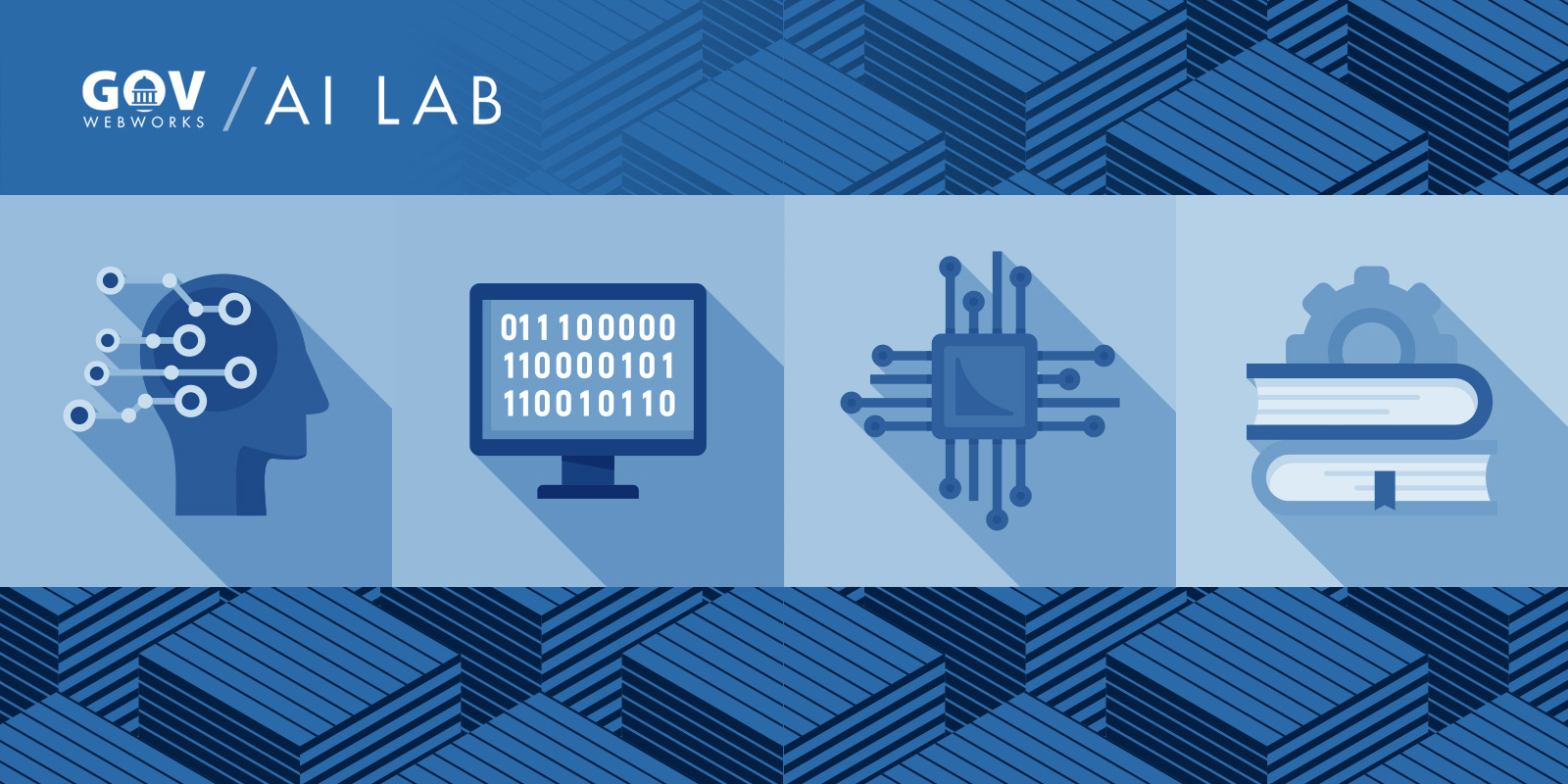Welcome to the April AI Newsletter from the GovWebworks AI Lab. The following articles touch on important topics in the industry, including:
- Unifying heterogeneous collections of data
- Using AI to detect how someone is “feeling”
- A new approach to data labeling for ML Models
- Conversational AI is getting better at debating with us
We hope you find this information as interesting as we do. If so, feel free to share with your colleagues and encourage them to sign up for the AI Newsletter and join the conversation! Or email us at ai@govwebworks.com to talk about using AI to optimize your organization’s digital goals.
#1: Unifying heterogeneous collections of data in the organization
Key takeaway: Newer AI solutions are enabling government agencies to make full use of, and understand the large amounts of data housed in different locations
Reviewed by Ravi Jackson and Adam Kempler
Most enterprises struggle to fully utilize all of the data contained in their various sources, meaning that a lot of data is underutilized, unused or forgotten. Making meaningful and actionable “knowledge” from the data is often a complicated and often drawn out process. “A Forrester survey found that between 60% and 73% of all data within corporations is never analyzed for insights or larger trends.“This has led to the private sector investing in solutions to process, understand, organize and take appropriate action on the various data and information available but underused by most organizations.
Indeed, according to Statista, the global big data and business analytics market is expected to grow from $169 billion in 2018 to $274 billion in 2022.One such example is Kansas-based Torch.AI which offers a solution that connects disparate apps, systems, cloud services, and databases to enable data reconciliation and processing. This is one of several companies who use machine learning, optical character recognition, natural language processing, sentiment analysis, and other techniques to break down and extract existing data from different sources so it can be processed appropriately.By breaking the data into smaller bits, data can be viewed more visibly and easily to determine its source integrity, which help organizations to organize and make use of this information. For example, Torch.AI‘s tools ingest data from any source and can provide “tagging on ingest” allowing enhanced data transformations and easier correlation of information. This allows government agencies to automate their data engineering tasks and workflows, including tasks like notifying an analyst of an anomaly and its potential impact, to recalculating risk or complexity scores.
As data scientists become more common in government agencies they are seeking to better utilize the data available from a wide range of disparate sources so they can turn this information into actionable data. Tools like those developed by Torch.ai address the need that many businesses and government agencies have to access and make sense of their increasingly large data sets.
Torch.AI raises $30M for AI that unifies disparate enterprise data
#2: Using AI to detect how someone is “feeling”
Key takeaway: NLP can help categorize the mental and physical state of individuals based on their feedback
Reviewed by Adam Kempler
The application of these types of NLP solutions in the near future are less about alternatives to therapists and other related health care workers and more about assisting them in the identification of emotional, physical, and mental state cues based on user feedback. This can be valuable for organizations such as hospitals, therapists, and clinicians to flag potentially dangerous or health threatening behaviors such as depression, alcohol abuse, ptsd, and anxiety.
Really, it’s not so far off from the way N:P is being used to categorize user input for spam, hate speech, or toxic content.For example, in a test I did using GPT-3, I provided the following text modeled after input that might be provided via a tool used by organizations such as the veterans administration to help identify resources that may be needed by veterans.
“Today was a tough day, it started out ok, but by the afternoon, I was depressed again and just lay on the couch all day. I had a few beers with lunch, and then a couple more with dinner.”
gpt-3 was then told to identify how the person is “feeling”, via the command: “Extract how this person is feeling”.
Keep in mind this was with no custom training of the nlp model. The result was: “This person is feeling depressed, and is drinking alcohol to cope.” Note that with custom training the results can be improved and made more consistent, but even with this initial test, the results were very impressive and show lots of potential for sentiment classification to aid staff in quickly identifying individuals that might need additional resources and support.
One thing to keep in mind if embracing technologies like this is that emotion and sentiment detection is not full-proof and can be error prone. I wouldn’t recommend using them without some form of human in the loop cycle.
Can Artificial Intelligence Replace Human Therapists?
#3: A new approach to data labeling for ML models
Key takeaway: “Active Learning” can drastically cut down the time and cost needed for labeling data by having the model ask questions
Reviewed by Ravi Jackson and Adam Kempler
Marking up or annotating data (data labeling) for use in an ML model can be a huge expense in time and resources, whether it’s for identifying or categorizing images, text, or other types of ai projects. Normally this can take many weeks/months to do because the assumption is that all data you are labeling is equally valuable. However, frequently this is not the case – data used for labeling is often repetitive or of low value.
Active learning takes a different approach that lets you train models used for machine learning using significantly less labeling and training data.If you were teaching a human to solve similar tasks given to those given to an AI/machine learning tool during training, you’d expect to be able to give them a few examples of what you want, have them learn quickly and ask questions when they were unsure.
Active learning works similarly – you first provide a few labeled examples, then the model “asks questions” about the data it is unsure about. The human trainer then provides the answer, actively training it. “By having the human trainer iteratively teach the AI tool, it’s possible to make a better machine learning model, in less time, and with much less labelled data.”
A better way to build ML — why you should be using Active Learning
#4: Conversational AI is getting better at debating with us
Key takeaway: AI is getting better at convincing us to take a particular course of action
Reviewed by Adam Kempler
For certain types of government applications and websites this capability could be very beneficial. Instead of passive content trying to persuade audiences of a course of action, such as getting treatment, signing up for support or educational tools, the AI can take a more active approach to helping and guiding users to resources that will benefit them. This could take the form of an AI Assistant but it could also be behind the scenes, personalizing the content users see to best meet their needs.
AI Can Now Debate with Humans and Sometimes Convince Them, Too
Learn more
- Sign up for the AI Newsletter for a roundup of the latest AI-related articles and news delivered to your inbox
- Find out more about using AI to optimize your organization’s digital goals







